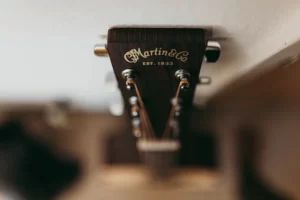- Introduction
- Fender Player Telecaster Review – Editor’s Choice
- The Body and the Neck
- Electronics
- Hardware
- Sound
- Features
- Specifications
- Pros
- Cons
- Why are Fenders considered among the preferable types of electric guitars?
- Which Fender Telecaster has an electric guitar body style?
- Telecaster Thinline is the best electric guitar under $500!
- Conclusion
Introduction
In the beginning, when people were not familiar with Telecasters. As time passed, people started to pay more attention to guitars. They discovered a newfound respect for the Telecaster that soon turned into curiosity, leading guitar players and musicians to try a few out in guitar shops. Now those guitarists appreciate the Telecaster for its vintage styling and unique sound. In this Fender Player Telecaster review, we’re going to look at the Fender Telecaster series. We’ll look at its features and see how suitable it is for those looking to upgrade.
If you are looking for any other type of Fender model, please check out Mustang 90 or Stratocaster!
Fender Player Telecaster Review – Editor’s Choice
While Fender did not develop the sturdy electric guitar, it was perhaps the most influential in developing and promoting the instrument worldwide. Fender guitars have long been noted for their pure, clear tone and high stability from several past models.
The Telecaster is no exception — it is, after all, the version that launched it all! Leo Fender’s first mass-produced guitar quickly hit a nerve (no, pardon the pun) amongst performers of all varieties; the Tele’s emergence corresponded with the advent of rock and roll and the growth of country music and other increasingly supercharged forms of the period. Because of its flexibility, durability, and outstanding sound, the Telecaster has remained popular to the present day.
Fender’s Player Series Telecaster seeks to integrate the basic functionalities of the Telecaster into a package that is more affordable for guitarists of various budgets. The resulting product is a simplified version that keeps everything that makes the Tele so famous while also making a few sensible changes for current players. Is it one of the greatest electric guitars available for less than $1,000? Let’s take a look at the specifics and see how they measure up!
The Body and the Neck
When it initially debuted in the early 1950s, the Telecaster’s basic slab body grabbed the guitar world by storm. It’s built of maple on this design, a tonewood Fender-like for its harmonious palettes and pure, brilliant tone. You can access all 22 chords on the neck with a single withdrawal. The neck of the Player Tele is constructed of mahogany and has Fender’s newest “C” form. It’s not too thick (though it’s a long way from the “U” necks of the original ancient Teles! ), and there was enough depth to support musicians of various sorts. This device is great for plucking and flexing strings.
The Player Series Tele is available either with maple or a Pau Ferro fretboard — the tonewood on the fingerboard is determined by the finish color. The maple is a quick-playing wood with many top-end glitters and snaps to complement the Tele’s tinkling major trophies. On the other hand, Pau Ferro has a more rosewood-like sound, with more depth and focus in the lower treble and basses. The fretboard is contoured to a 9.5′′ radius, which is curving enough to make plucking harmonies simple, but a touch flatter than other classic Fenders to keep you performing rapidly vertically and horizontally down the neck.
Electronics
At first glance, the Player Series Tele looks identical to nearly every Telecaster model in Fender’s catalog – that has two independent coil tones, with the traditional red coating on the necks and the slanted saddle humbucker built into the body.
On the other hand, such sensors have their distinct sound that blends certain old elements while being tuned for current players. The humbucker on this instrument was custom-made for the Player Series data! Aside from the primaries, simplification is still the goal of Telecaster electronics configurations. The Player Series is no different. On the chrome panel under the neck, you’ll notice a three-way humbucker selector knob and knurled knobs for master loudness and master tone. It’s a simplified configuration that’s highly intuitive while yet offering a wide range of tonal options.
Hardware
The Player Series Tele’s hardware is very similar to the original Telecaster designs, including one significant distinction, the bridge. The Player Series utilizes a set of six block-steel slats rather than the three-saddle mechanism seen on early Telecasters and numerous other Fender models now on the market. Certain players feel that the additional metal enhances the vibration and endurance of their performance, while others appreciate the antique design’s iconic aesthetic. In any event, The Player Series retains Teles’ prior iteration’s string-through-body design.
This guitar is completed with normal Mexican Fender hardware. The neck has 22 standard-size chords, a synthetic nut, and a collection of six die-cast Fender spinners on the barrel. Since these knobs aren’t secure, they should be adjusted regularly to ensure your guitar stays in harmony.— but for the price, they perform an outstanding job.
Sound
The Player Series Telecaster looks like the real deal, but can it reproduce the classic Tele sound? Happily, the answer is a resounding “yes.” With its clean, precise tone palette, this axe promotes clarity. There are enough spanks to go around, and it doesn’t fall further into scratchy or unpleasant territory as many minimal devices do.
However, this instrument has a handful of average possibilities, particularly when utilizing the neck gauge. Telecasters aren’t known for being very bass-heavy, which is much more “strict and regimented” rather than “prospering and rich” but it’s a nice change from treble-heavy cheap guitars.
The Player Tele responds wonderfully when your amplifier is overdriven. It keeps the original twang while delivering a beefier, more powerful distorted sound. It’s ideal for country, blues, vintage rock, and indie genres.
Features
- Pickups for two Player Series single-coil Telecasters
- Alder body with a gloss finish
- Modern-C neck profile
- Radius fingerboard 9.5″
- Bridge with string-through-body construction with block steel saddles

Specifications
- Body Material Alder
- Body Finish Gloss Polyester
- Neck Material Maple
- Truss Rod Standard
- Truss Rod Nut 3/16″ hex adjustment
- Pickup Player Series Alnico 5 Tele Single-Coil
- Controls Master Volume, Master Tone
- Bridge 6-Saddle String-Through-Body Tele® with Block Steel Saddles
- Control Knobs Knurled Flat-Top
- Switch Tip Barrel Style
- Neck Plate 4-Bolt with “F” Logo
Pros
- Masterpiece Tele Thinline appearance
- Extremely detailed construction
- Airy Thinline sounds
Cons
- Some players may prefer satin neck finishes.
Why are Fenders considered among the preferable types of electric guitars?
The Fender Telecaster was the first mass-produced acoustic guitar, originally known as the Broadcaster. It is, nevertheless, a flexible instrument that can be used in a wide range of genres, including country, rock, blues, jazz, rock, soul, folk, R&B, and alternative rock.
The flatter, asymmetrical, single-cutaway inflexible surface, bolt-on necks, a metal backplate upon which the top humbucker is fixed, and a permanent saddle differentiate Telecasters, Teles, and T-style guitars. Because of its brilliant, rich ripping tone, the guitar was mostly used in the country genre. On the other hand, the guitar can produce soft, warm, bluesy jazz tones, making it a versatile instrument. Telecasters have a hard time producing heavy rock tones.
Many musicians from several genres, including Muddy Waters, Keith Richards, Tom Morello, Jimmy Page, Andy Summers, and many more, have utilized Teles at some point in their careers.
Which Fender Telecaster has an electric guitar body style?
Thinline Fender Telecaster 72 – The Fender Telecaster is well-known (there will be plenty more once we get to Solid Bodies). However, the thinline is a little more hidden. It was designed to be lightweight by eliminating a centre block for stability and sustainment and leaving the flaps unfilled when initially produced in 1968.
There have also been some humbucker variants, ranging from the classic Tele arrangement to two wide-range bridge humbucker that gives the original Tele’s extraordinarily clean tone a delicate depth.
The latest models with humbuckers substituting the single circuits have the advantage of eliminating the normal single coil noise. Still, the flattened frame is more susceptible to kickback at large volumes and when performing distortion.
Telecaster Thinline is the best electric guitar under $500!
Squier’s version on the legendary ‘70s Fender Telecaster Thinline delivers the guitar’s renowned appearance and performance to the forefront at an unbelievably affordable price range. The guitar fits the profile with a white Pearloid scratchplate, a delicately carved f-hole, and Fender-embossed humbuckers. Even though the Modified ’72 Telecaster Thinline has a gloss-finished contemporary C neck, the guitar’s playability and sound are just outstanding for the price.
The tidies from the chord and bridge positions on the ’70s Telecaster Thinline are rock-solid. It carries a power comparable to the tones created by hefty P-90 individual coils, yet the semi-hollow body processes a woodier, less combative attitude than a straight-up solid body.
The bridge humbucker produces a far more powerful tone that would sound perfectly at home with a percussive, ratcheted tube amp. The wide midrange of the guitar lends itself to both exquisite clawhammer style and big, in-your-face rock shredding. The Telecaster Thinline from 1972 is a gorgeous guitar that can be styled up or down.
Conclusion
According to this Fender Player Telecaster Review, The Player Series Telecaster is a low-cost yet surprisingly sophisticated alternative. With a market value even under $1000, Fender has incorporated an impressive number of features without compromising build quality. This instrument is flexible enough to be a good buy for performers of practically any genre.







